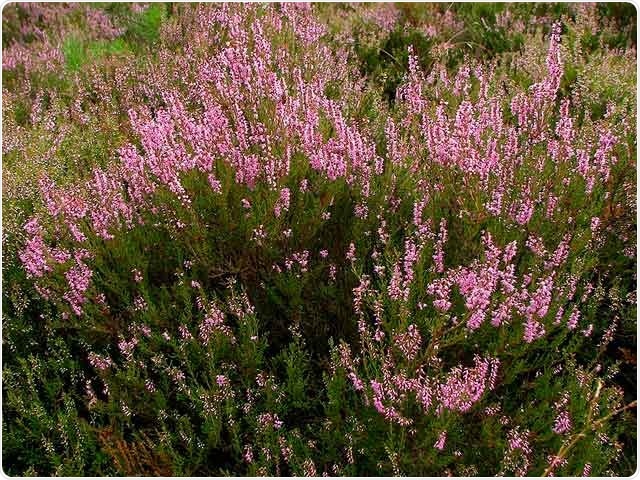The heather plant is a source of useful biologically active substances that have antitumor, anti-inflammatory, antiviral, neuroprotective, and cardioprotective effects, according to scientists.

Image Credit: Immanuel Kant Baltic Federal University.
The team has also demonstrated that this plant is an effective herbal medicinal raw material. This tiny relict, evergreen shrub is grown widely in Europe and has been utilized as a medicine for treating arthritis, rheumatism, and even used as a choleretic, antiseptic, wound healing, expectorant for a long time.
Heather has an extensive range of medicinal properties that have been established by the high content and diversity of biologically active substances in the plant, mainly phenolic compounds, which carry out several different functions—for instance, they are involved in plant breathing and photosynthesis processes.
While heather is excluded in the list of medicinal products, this plant is a source of valuable biologically active substances that have antitumor, anti-inflammatory, antiviral, cardioprotective, and neuroprotective effects, informed the researchers.
To demonstrate this claim, both the staff and students from the Institute of Living Systems have been gathering common heather between May and October 2019 at four stages—that is, beginning of vegetation, budding, flowering, and fruiting—in the Pig Swamp on the Curonian Spit.
The team has successfully established the content of biologically active compounds in the roots, stems, rhizomes, leaves, seeds, and flowers, and also determined the antibacterial and antioxidant activity of the extracts against the microorganisms hay bacillus and Escherichia coli.
The phytochemical composition of heather is well studied. However, there was no research on the seasonal dynamics of the quantitative content of flavonoids, tannins, anthocyanins, proanthocyanins, hydroxycinnamic acids.”
Lyubov Skrypnik, PhD in Biology and Associate Professor, Institute of Living Systems, Immanuel Kant Baltic Federal University
Skrypnik continued, “In addition, earlier most of the studies were devoted to the study of the aboveground part of the heather, but in our work, we proved that phenolic compounds are actively accumulating in underground organs—the roots and rhizomes of the plant. Typically, heather is harvested for medicinal purposes during the flowering stage.”
But in the course of the study, we found that the maximum amount of flavonoids, which are of the greatest medicinal value, accumulates in all organs of the heather during the budding phase. This leads to a recommendation for harvesting heather plants just before flowering.”
Lyubov Skrypnik, PhD in Biology and Associate Professor, Institute of Living Systems, Immanuel Kant Baltic Federal University
“Additionally, it was found that the budding stage is the only stage at which the antibacterial activity of the extracts of all the studied parts of the plant was found simultaneously, and the leaves and stems showed an antibacterial effect against bacteria of E. coli and hay bacillus,” concluded Skrypnik.
Source:
Journal reference:
Chepel, V., et al. (2020) Changes in the Content of Some Groups of Phenolic Compounds and Biological Activity of Extracts of Various Parts of Heather (Calluna vulgaris (L.) Hull) at Different Growth Stages. Plants. doi.org/10.3390/plants9080926.